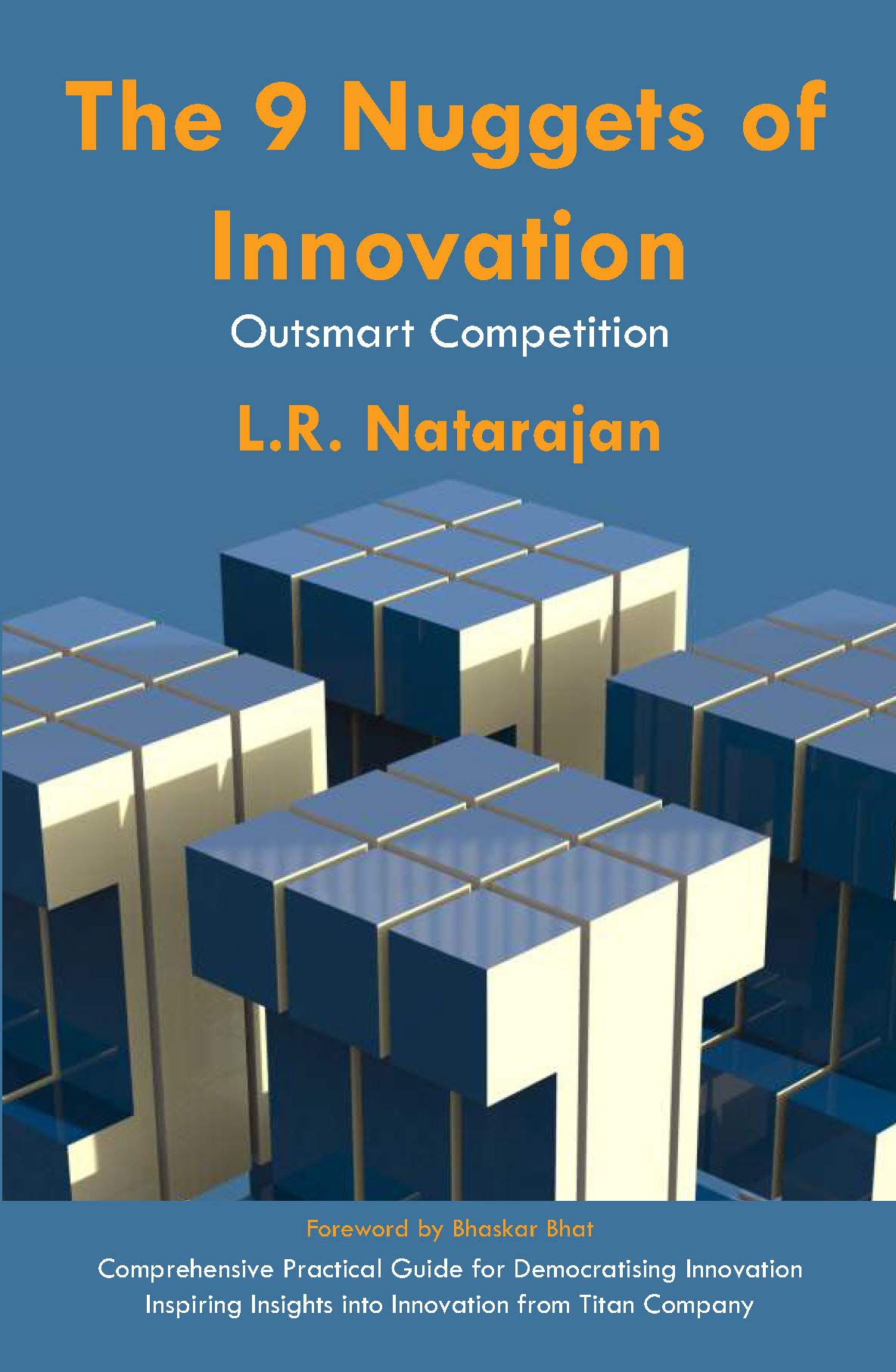RJ Market Watch
LR Natarajan’s book ‘The 9 Nuggets of Innovation’ doles out lessons on how jewellers’ can imbibe innovation in everyday business
According to LR Natarajan, invention is the process of turning an idea into first working model. Innovation is how you make use of amenities available as a means to achieve a goal.

Innovation is perhaps the most pressing need of the Indian jewellery sector. Until now, it was difficult to grasp the essence of innovation and implement in jewellery trade. But business innovation consultant LR Natarajan’s book ‘The 9 Nuggets of Innovation’ has made the task surprisingly simpler and familiar. Shubham Dasgupta discusses the salient features of the book with innovation veteran Natarajan, who with his 35 years of experience had spearheaded the innovation council of Titan.
The Retail Jeweller (TRJ): Your experience with Titan has strengthened the innovation department of its jewellery division. Can you share some instances of innovation by Titan staff?
LR Natarajan (LRN): The 1995-2003 period was loss-making for Titan and the jewellery division was about to be closed. The Innovation School of Management was formed to address specific challenges of the organization. For example, through the school, we improved diamond setting from 150 stones per person per shift to 1800 stones per person per shift. Before, it took about 2.5 years for a worker to learn setting diamonds properly. Now, one can learn that in half-an hour here. Another breakthrough was reducing the lead time of jewellery manufacturing from 35 days in the early 20s to 3 days. It took years to train the hitherto unorganized section of vendors to align to Titan’s thinking and reduce the lead time.
TRJ: Could you share instances of staff training at the academy?
LRN: For the first three days, the staff were given lessons on the What, Why and How of innovation. Each of them were given time to work on tasks that didn’t have an immediate solution, such as ways to work with half the inventory cost. For three months, a mix of workers with basic understanding of jewellery, managers and executives from various departments attended innovation classes. With learnings of teamwork, each staff learned to innovate in his/her capacities without the need of assessment on any performance metrics.
TRJ: Could you simplify the definition of innovation for our readers?
LRN: Firstly, the difference between invention and innovation needs to be known. Invention is the process of turning an idea into first working model. Innovation is how you make use of amenities available as a means to achieve a goal. My favorite definition is “The act of creating new value to the customer in an unprecedented way.”
TRJ: How can a brand head teach his/her subsidiary to innovate?
LRN: From Titan, we have extended innovation to all vendor partners. We had held an innovation bazaar for specific vendors to showcase their innovation in jewellery. They were also taken to Hong Kong jewellery centers for better learning. In our training ethics, we trained each staff to question himself/herself to find solutions rather than feel low in case of not being able to deliver on time. The process took years of time, but was a massive success. In my book, I’ve mentioned how a brand head can co-create innovation with employees. You’ll have to prioritise your areas on innovation and ask staff to commit to that. In this way, you can fulfil your vision statement.
TRJ: Could you elaborate with instances from Titan’s operation?
LRN: For Gold Plus, we sought customers’ permission to record our conversation about personal preferences and gift the same customer based on those preferences. For instance, if you, a Gold Plus customer, like Rajnikanth, the company will book balcony tickets for you when the star’s film releases. Similarly, as part of Ananta scheme, we had 400 differently abled children design cards and carry bags for customer. Such gestures go a long way in earning loyalty. That’s the attitude a jeweller should adopt today to have customers return.
TRJ: Post-pandemic, innovation is important for any brand to stay relevant. How can a family jeweller in a tier 2-3 city imbibe learnings from your book to innovate in his/her way?
LRN: The pandemic is a natural calamity which will pass. During pandemic, the jeweller has to extend their love and commitment to the customer. This is the time when your help gets noticed. When you appeal to the emotions of the customer, you earn loyalty. Certain brands out there are selling the idea of earning redeemable points, but ideally, you should extend support without hoping to get immediate returns.
Courtesy: Retail Jeweller India News Service





 Wide Angle1 month ago
Wide Angle1 month agoIndia has overtaken China to become second largest diamond market: De Beers CEO Al Cook

 Daily News1 month ago
Daily News1 month agoUS-based private equity firm Advent International to acquire Orra Fine Jewellery, say media reports

 Wide Angle1 month ago
Wide Angle1 month agoEminent jeweller Viren Bhagat sets up first global boutique in London’s Mayfair

 Daily News1 month ago
Daily News1 month agoLimelight Lab Grown Diamonds secures $ 11 million in funding to fuel its retail growth

















